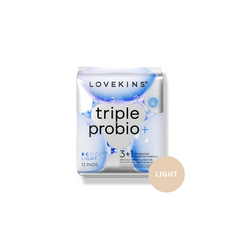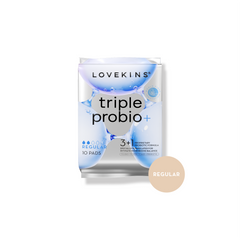This blog is written by midwife Aliza Carr from Bumpnbub.
Being induced or having an induction of labour is becoming more common in some healthcare settings. Knowing the process of induction, the benefits and risks, and tips that can help you is vital in the lead-up to your birth. Seek all the information you need to make an informed decision and do your research to decide what is best for you and your baby. Discuss with your healthcare provider what the risks and benefits of waiting for labour to start spontaneously are, versus being induced. From here you can make the decision you feel most comfortable with. If being induced is something you do not want, you and your partner have every right to refuse as long as you understand what risk this may pose for you or your baby. Every situation is different, so it is very important to chat to your OB or midwife regarding your circumstance before deciding.
Induction of labour meaning
Induction of labour is when your labour is started artificially by medical professionals because you or your baby will benefit from labour being brought on rather than waiting for spontaneous labour to occur. There are different methods to induce labour, sometimes only one method is used but often a combination of methods is needed. To determine the best method of induction for you, your healthcare provider might recommend a vaginal examination to check how ‘ready’ your cervix is for labour. The most common methods used to induce labour are Prostaglandin Gel, a Balloon Catheter, Breaking your Waters (artificial rupture of membranes- ARM) or using a Hormone Drip (Syntocinon infusion). When using Prostaglandin Gel or the Balloon Catheter, the aim is to encourage the cervix to open enough for your healthcare provider to break your waters. Once your waters are broken, your midwife will commence the hormone drip at a low rate and gradually increase it until you are having regular, strong contractions and are in active labour.

There are risks with every medical procedure, including being induced, and there can also be risks with not being induced. Your healthcare provider should explain the procedure, risks, benefits and potential scenarios allowing you to make an informed decision for you and your baby.
Why are women often induced?
Many different reasons may influence your healthcare provider to recommend an induction, or it may be your preference due to social reasons. Reasons why mothers are induced can be categorised into maternal, baby, medical or social.
Maternal reasons
Being past your due date, your waters have broken and you haven’t gone into labour naturally after 18 hours (prolonged rupture of membranes), or the placenta is not functioning efficiently anymore.
Baby reasons
Your baby’s growth has slowed or stopped (intrauterine growth restriction), your baby is small for gestational age or large for gestational age, the baby has a diagnosed condition, or the baby has repeated episodes of decreased movements.
Medical reasons
The mother has high blood pressure or pre-eclampsia, diabetes, kidney problems, cholestasis, or is taking blood thinners that need to be stopped before labour.
Social reasons
Maternal requests for personal reasons, for example, support person or partner has a fly in/fly out job or mental health reasons.

What to expect during labour and birth?
Your induction process will differ depending on which method is used, so ask your healthcare provider to explain the method they are recommending and what this involves for you. It’s important to be aware that the process of induction can be lengthy depending on how ‘ready’ your cervix is. Induction is different for every woman, sometimes being induced can be quick and other times it can take longer.
Because an induction involves bringing on labour and birth artificially, therefore you and your baby must be monitored closely through this process to minimise the risk of complications. Through the induction process and labour, your observations (blood pressure, heart rate, temperature) will be regularly undertaken, as well as the baby’s heart rate. If you need the Syntocinon Infusion (hormone drip) for your induction there are a few extra things to expect:
- You will need a cannula (thin plastic tube) inserted into a vein in your hand or arm so your midwife can administer fluids and medication via a drip. You will be connected to the drip by a line attached to your cannula, the drip pole is portable so you can still be mobile but it can restrict your ease of movement.
- Once the hormone drip starts, you will also be connected to a CTG monitor which is a continuous monitor of your baby’s heart rate to ensure they are happy throughout the induced labour. Because you are connected to the CTG monitor and drip, this might impact your ability to labour in a bath or birth pool so make sure you ask your healthcare provider regarding the protocol for your hospital. If your hospital has a waterproof CTG machine you should still be able to labour in the shower if you wish.
Another factor to consider with induction is that generally there is a maximum length of time recommended on the hormone drip, so you will have regular vaginal examinations offered to you as part of tracking how your labour is progressing. Again, this is up to you if you wish to have these. Often women state that induction is ‘more painful’ than spontaneous labour, so the chance of you needing pain relief, such as an epidural, may be higher.
Tips for mums being induced
You can still facilitate a positive birth experience with induction. Stay positive leading up to your induction, listen to podcasts about induction and research ways to help improve your experience. Having a known healthcare provider that you trust and a good support team with you through the process will be beneficial to you. Create birth preferences and ensure your healthcare provider knows what your preferences are before the induction, including what pain relief you may want. Build your supply of endorphins (pain-relieving hormones) through physical touch from your partner or a TENs machine. Encourage natural oxytocin production by being affectionate with your partner; cuddle, dance, laugh and get them to massage you. Ask your healthcare provider to give you as much time as possible on your own without them in the room so you and your partner can have space and privacy. Stay active in upright positions, use a birth ball, change positions frequently, and do lunges and squats to help your baby get in an ideal position. Finally, create a relaxing birth environment and set up the room how you want it. Ways to do this include; dim lights, having candles or fairy lights, playing music of your choice, diffusing oils that are familiar to you, moving furniture so you have space to move around, and placing affirmation cards or photos of other children on the walls.

We hope this blog helps you feel empowered and excited ahead of your induction!
This blog is general advice only and does not replace the need for individual advice and medical attention.













